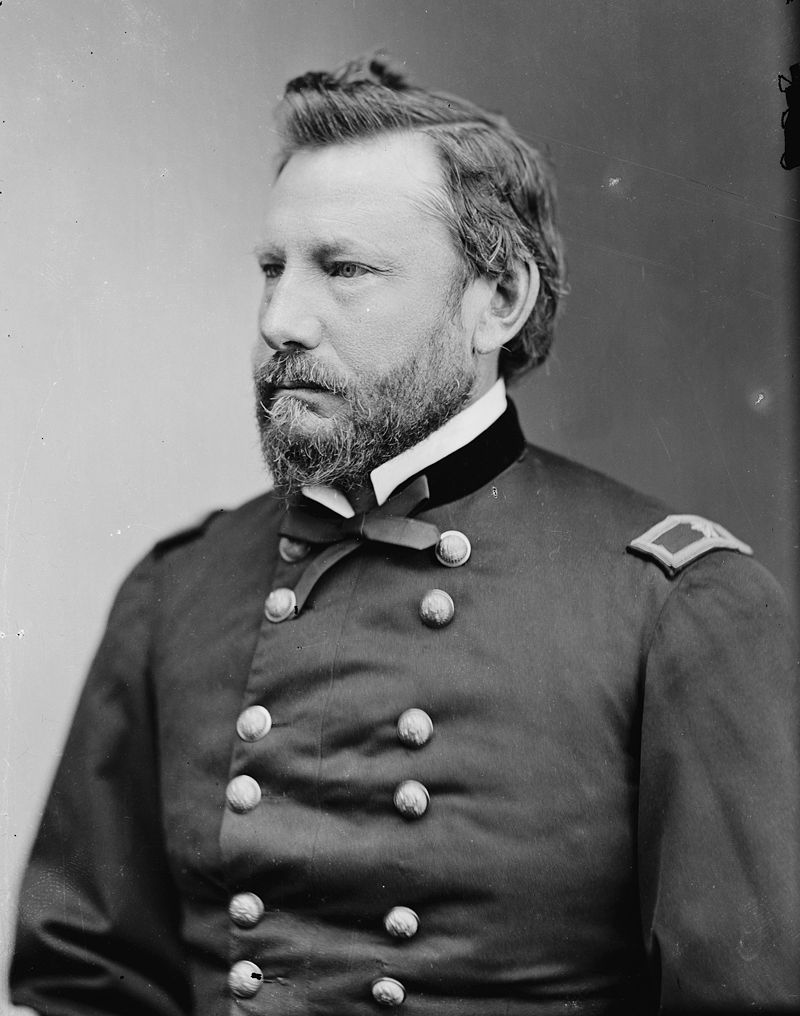Albert James Myer
Albert James Myer was born on September 20, 1828, in Newburgh, New York, to Henry and Eleanor Myer. His mother died around 1834, and he grew up and attended school in Buffalo, New York. He graduated from Geneva College in 1847, and he earned his medical degree from Buffalo Medical College four years later. He wrote his thesis on A New Sign Language for Deaf Mutes.
He spent several years working as a doctor in Florida. Then, in September 1854, he received a commission as an assistant surgeon in the United States Army. He married Catherine Walden on August 24, 1857, and they had at least six children: Catherine, born around 1858; Helen, born around 1860; Albert, born around 1863; Violet, born around 1865; Walden, born around 1867; and Gertrude, born around 1871. He devised a system of aerial telegraphy, and the army conducted a series of tests in the late 1850s. In June 1860, the War Department promoted him to major and authorized him to organize the new Army Signal Corps.
He served with the Army of the Potomac during the Peninsula campaign, the Seven Days’ Battles, the Second Battle of Manassas, and the Battle of Antietam. He was promoted to colonel in March 1863, and he wrote the Manual of Signals for the United States Army and Navy. He served as signal officer for the Department of the Gulf from August 1864 until 1865.
He remained in the army after the war and continued to lead the Signal Corps. In 1873, he attended the International Congress of Meteorologists in Vienna. Six years later, he attended another meteorological congress in Rome. He was promoted to brigadier general in June 1880, and he died of nephritis in Buffalo on August 24, 1880.
Image: Albert J. Myer (courtesy Wikicommons)
DATABASE CONTENT
| (5156) | Myer, Albert James | 1828-09-20 | 1880-08-24 |
- Conflict Side: Union
- Role: Soldier
- Rank in: Major
- Rank out: Colonel
- Rank highest: Colonel
- Gender: Male
- Race: White
Documents - Records: 1
- (4544) [writer] ~ Albert J. Myer General Order, 24 March 1862
Places - Records: 2
Regiments - Records: 1
- (406) [officer] ~ United States Signal Corps
SOURCES
1870 and 1880 United States Federal Censuses, available from Ancestry.com; College Student Lists, 1763-1924, available from Ancestry.com; Appletons’ Cyclopedia of American Biography, 1600-1889, available from Ancestry.com; “Albert J Myer” Wikipedia profile, available from https://en.wikipedia.org/wiki/Albert_J._Myer





